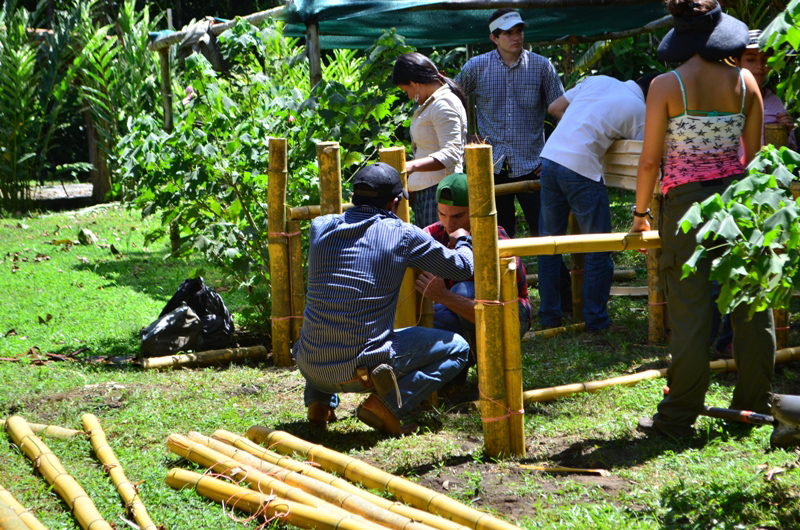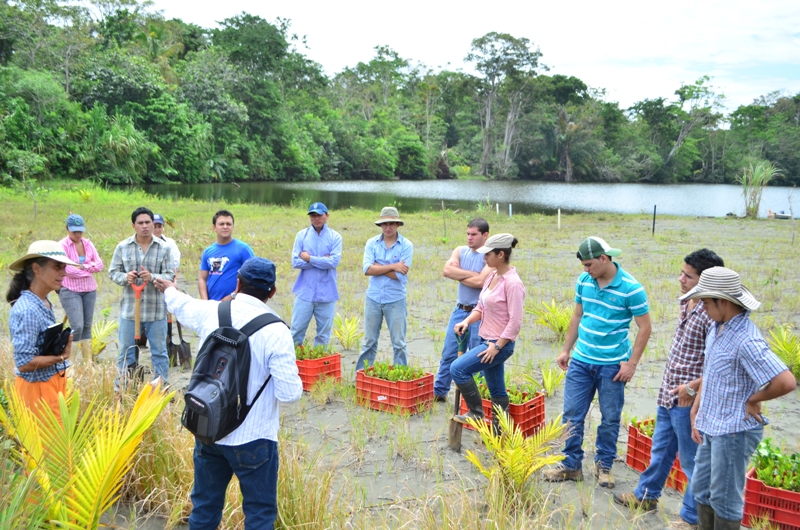Field visit to wetland reserve shows experiential learning in practice
Imagine sitting in a lecture hall and having a professor explain the physical characteristics of the moon—its internal structure, surface geology, gravity, magnetic fields and atmosphere. You take an exam and never think about it again. A year, five years, 10 years later, you cannot recall more than a few factoids.
Now imagine that as part of the course, you were sent in spaceship to the moon, where you did a moonwalk and took and analyzed surface samples. Never in your life would you forget the physical characteristics of the moon, as your memory of exploring them would have become part of your life experience.
At EARTH, this experiential approach to learning and teaching is a fundamental part of the University’s academic model; courses integrate theoretical concepts with exploration, observation and practice.
 Recently a group of third-year students did a field visit to the Pacuare Nature Reserve as part of the Applied Ecology course taught by Professor Julio Tejada. This reserve seeks to protect the critically endangered Leatherback turtle, and its location (between the Pacuare and Matina estuaries) makes it an ideal place to learn about wetlands.
Recently a group of third-year students did a field visit to the Pacuare Nature Reserve as part of the Applied Ecology course taught by Professor Julio Tejada. This reserve seeks to protect the critically endangered Leatherback turtle, and its location (between the Pacuare and Matina estuaries) makes it an ideal place to learn about wetlands.
“I wanted to show the students a wetland ecosystem—in this case one with influx from fresh and coastal water—and for them to evaluate its operational and structural characteristics. In addition, by seeing the threats facing these ecosystems, we raise awareness for their conservation,” said Professor Tejada.
Students caught up on their sleep during the hour and a half drive on the highway and then on a dirt road through a banana plantation. At the end of the road, they filed out of the bus and on to boats. During the 20 minutes of travel through the Tortuguero Canals, those wetlands became the students’ classroom. In them, the students could appreciate the variety of native flora and fauna, and their studies in the classroom came alive in front of their eyes.
When they arrived, Mr. Carlos Fernández, the Director General for Costa Rica’s Sea Turtle Protection Project, received the visitors, explaining to them the importance of the work the reserve does to protect both the Leatherback turtle and primary forests.
At the end of the talk, the students organized themselves in two groups; one planted 200 tabog trees (Swinglea glutinosa), which will work as a living barrier to prevent sea erosion in the area, and the other made garden beds with bamboo for hydroponic crops to help supply the reserve’s food needs. Once they finished, the students had lunch and spent time at the beach. For some it was only the second time seeing the ocean with their own eyes—one more reason why this trip proved so memorable.
 On this visit, the students not only participated in hands-on learning but also had the opportunity to contribute to the well-being of the reserve. “It was an unforgettable experience because it taught us in a dynamic way the relationship between the wetland ecosystem and human impact,” remarked Erick Márquez (‘13, Ecuador).
On this visit, the students not only participated in hands-on learning but also had the opportunity to contribute to the well-being of the reserve. “It was an unforgettable experience because it taught us in a dynamic way the relationship between the wetland ecosystem and human impact,” remarked Erick Márquez (‘13, Ecuador).
Making this link between theoretical knowledge and real life experience is a fundamental part of the teaching/learning experience at EARTH. “This trip was very helpful; I learned a lot about wetlands in the humid tropics and some natural resource conservation practices at the reserve,” said Margareth Medina (‘13, Guatemala).
Ms. Hilda Mendoza Denham, the reserve’s owner, expressed her satisfaction with the experience: “It was a pleasure to have had EARTH here; it is an injection of youth and of mutual learning; we are so happy and hope that EARTH keeps visiting.”




